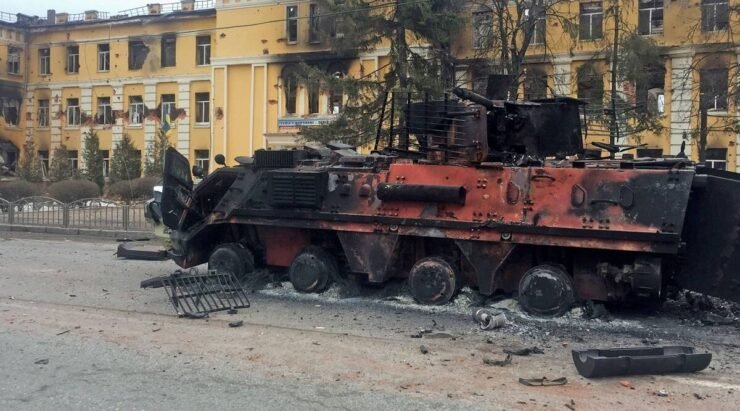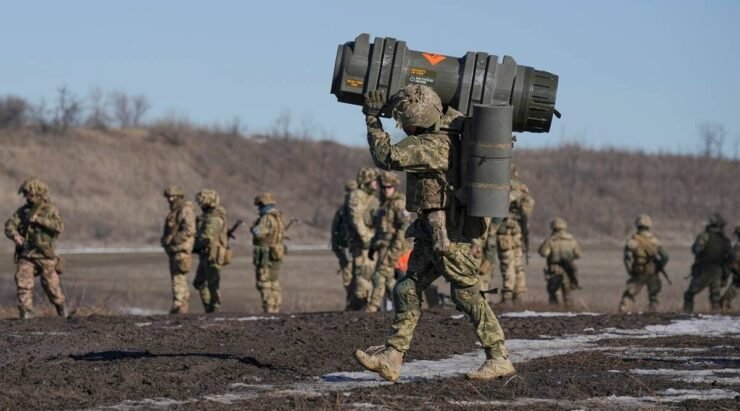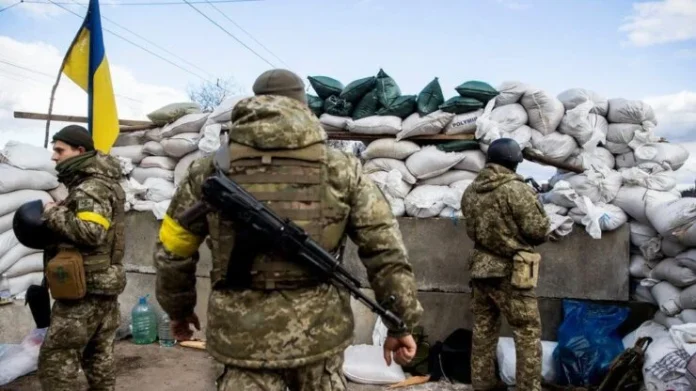During the first week of Russia’s invasion of Ukraine, the Russian leaders repeatedly raised the prospect of a nuclear response should the United States or its NATO partners intervene in the war. Russian President Vladimir Putin concluded his speech announcing the war in Ukraine by warning that ‘anyone who tries to interfere with us … must know that Russia’s response will be immediate and will lead you to such consequences as you have never before experienced in your history.’ He subsequently emphasised Russia’s ‘advantages in a number of the latest types of nuclear weapons’ while ordering the Russian strategic nuclear forces on alert. Russian Foreign Minister Sergey Lavrov returned to this theme a few days later, noting that a third world war would be a nuclear war and urging Western leaders to consider what a ‘real war’ with Russia would entail. The message was crystal clear: nuclear escalation is possible should the United States or its NATO partners intervene in Russia’s war against Ukraine.
Observers have expressed shock at the notion of a return to Cold War nuclear brinksmanship. The West and Russia may now be entering into the terminal stages of an insecurity spiral—a series of mutually-destabilising choices—which could end up in a tragedy, producing a larger European conflagration even if it doesn’t go nuclear. The United States should be especially attuned to the risks of escalation as the next phase of conflict begins, and should double down on finding ways to end the conflict in Ukraine when a window of opportunity presents itself. This may involve difficult and unpleasant choices, such as lifting some of the worst sanctions on Russia in exchange for an end to hostilities. It will, nonetheless, be more effective at averting an even worse catastrophe than any of the other available options.

In the parlance of security studies, an insecurity spiral ensues when the choices one country makes to advance its interests end up imperiling the interests of another country, which responds in turn. The result is a potentially-vicious cycle of unintended escalation, something that has happened many times before. For example, Germany’s attempt at the turn of the twentieth century to build a world-class navy threatened the naval power on which the United Kingdom depended; in response, London began to bulk up its own navy. Germany responded in kind, and soon, the scene was set for World War I. The origins of the Cold War between the United States and the Soviet Union share a similar genesis, as both sides sought influence throughout the world and engaged in an arms race. In each case, a tit-for-tat spiral drove states towards conflict.
Sense of insecurity
Today, the United States and Russia have already taken steps to shore up their real or perceived sense of insecurity, spurring the other side to do the same. Recent events highlight the trend: the 2008 Bucharest summit, at which NATO pledged to bring Ukraine and Georgia into the alliance, was followed by Russia’s 2008 invasion of Georgia. A 2007 dispute over the Bush administration’s plans to base its missile defence in Poland and the Czech Republic was followed by Russian violations of related arms-control agreements. In 2014, the EU’s offer to Ukraine of an association agreement precipitated the Maidan revolution in Kiev, heightening Russian fears of Ukraine’s NATO membership and prompting the Russian seizure of Crimea that year.
Russia’s invasion of Ukraine, however, has dangerously upped the ante and accelerated the spiral’s pace. In response to Moscow’s wanton and illegitimate aggression, the United States, NATO and the EU member states have sent Ukraine significant quantities of lethal weapons, placed draconian sanctions on Russia’s economy, and launched a long-term military buildup. Currently, Moscow sees the United States and its partners threatening to make Ukraine into a de facto ally—a situation Moscow’s own aggression helped cause—whereas the United States sees Moscow threatening the core principles undergirding peace in Europe.
Spirals are defined by their tragic nature: even states that might not want to directly confront one another end up competing and risking war. As Russia’s invasion continues, Western arms flood into Ukraine and sanctions threaten to collapse the Russian economy. Each side appears committed to ratcheting up the pressure further. It may take just a single spark to ignite a broader conflagration.
For obvious reasons, much of the concern about escalation has focused on the nuclear question. Putin’s announcement that Russian strategic nuclear forces would be raised to a higher alert status was a clear attempt to deter direct Western military action by raising the stakes. But although policymakers are right to take nuclear escalation seriously, they should not discount the risks of conventional war between NATO and Russia. After all, low-level conventional conflicts between nuclear powers have occurred elsewhere, including clashes between China and the Soviet Union in the 1960s and in the 1999 Kargil war between India and Pakistan.

Stability paradox
Scholars have developed a theory to explain why such conflicts happen: the stability-instability paradox, in which states, stalemated in the nuclear realm, might be more willing to escalate in conventional terms. There are multiple paths through which such an escalation to a broader war might happen today. One scenario stems from the economic war the West has launched against Russia in the last week. The US and its allies have entered into uncharted territory: such sanctions have never been used against a major global economy such as Russia. Even in a few short days, the effect of these measures has been widely felt: the ruble crashed, the Russian citizens lined up at banks to withdraw their savings, the Russian government imposed capital controls, and Western companies such as BP and Ikea rapidly exited the Russian market.
It is hard to think of historical parallels to this sudden isolation of a major economy, and the few comparable historical cases—Italy in the 1930s, Japan in the 1940s—do not bode well. Indeed, if the economic damage in Russia becomes severe enough, Putin may decide that it is worth retaliating through non-military means such as cyberattacks, which are already on by some measures. He may decide things are bad enough that it is worth forgoing energy revenues and shut down some gas pipelines to Europe, which would send energy prices soaring.
There is also a serious risk that the conflict in Ukraine might spill over its borders. Europe is engaged in a rapid period of rearmament, with dramatically shifting security conditions on the ground. Russia’s actions in Ukraine have obscured its de facto military annexation of Belarus, and the US forces have poured into the region to reinforce NATO’s eastern member states. This has heightened tensions and made accidental confrontation between the sides more likely.
Airspace violation
Amid Russia’s attack on Ukraine, for example, four Russian planes violated Swedish airspace. Though a frequent occurrence during peacetime, it is highly dangerous during a shooting war and could easily draw anti-aircraft fire. The problem would be worse if the Russian planes accidentally violated the airspace of a NATO member state bordering the conflict. Another possibility: since the start of the conflict, arms have flowed into Ukraine to bolster its defence, at first by air but more recently on land through transfers from the NATO states bordering the warzone. If the war continues, Russia might decide to shut down these transfers by, for example, attacking supply lines leading from the transfer points; such efforts might inadvertently kill or harm NATO personnel. Again, an escalating spiral could take hold. These problems will only become more pressing if Russia continues to take territory inside Ukraine and the land routes for resupply become more limited.
Finally, there is always the risk of freelancing by regional allies, which might draw Russia and the rest of NATO into direct conflict. Thus far, unity within the alliance has been impressive, but the NATO member states closest to Russia—particularly Poland and the three Baltic states (Estonia, Latvia, and Lithuania)—are the ones that have been among the most ardent and active proponents of arming Ukraine. This has included questionable announcements such as an unexpected offer—since walked back—to give Ukraine surplus European fighter jets. If the Russians seize Kyiv or overthrow the Ukrainian government, these states will likely be strong proponents of arming and supporting an insurgency inside Ukraine. What will the United States do if Russia bombs a Ukrainian camp or resupply mission on, for example, Polish territory? What if the Lithuanian troops—perhaps operating on their own or having misread a map—are killed while delivering arms to the Ukrainian forces? As seen in conflicts from Colombia to Syria, this kind of support risks blurring the lines between combatants and non-combatants, dramatically increasing the risks of a broader war.
Perilous period
Although the Biden administration has been relatively careful and judicious in its approach to arming Ukraine, it may be rapidly approaching a more perilous period of this conflict. The Russian forces will likely seize more Ukrainian cities and inflict more harm on the Ukrainian civilians, thus increasing moral outrage at Russia’s actions. Pressure is likely to mount for Western governments to offer additional assistance to Ukraine, particularly if an insurgency erupts in the Russian-occupied areas.
The most effective way to curtail the risks of escalation in Europe is to end the conflict in Ukraine. This will be difficult, perhaps impossible, to do in the near term given the irreconcilable demands of each side, and the West’s understandable desire to support Ukraine. Ultimately, the only thing more tragic than the present war would be an even bigger, bloodier one.
– The writer is an Indian Army Veteran and former Chief of Staff, Central Command.





